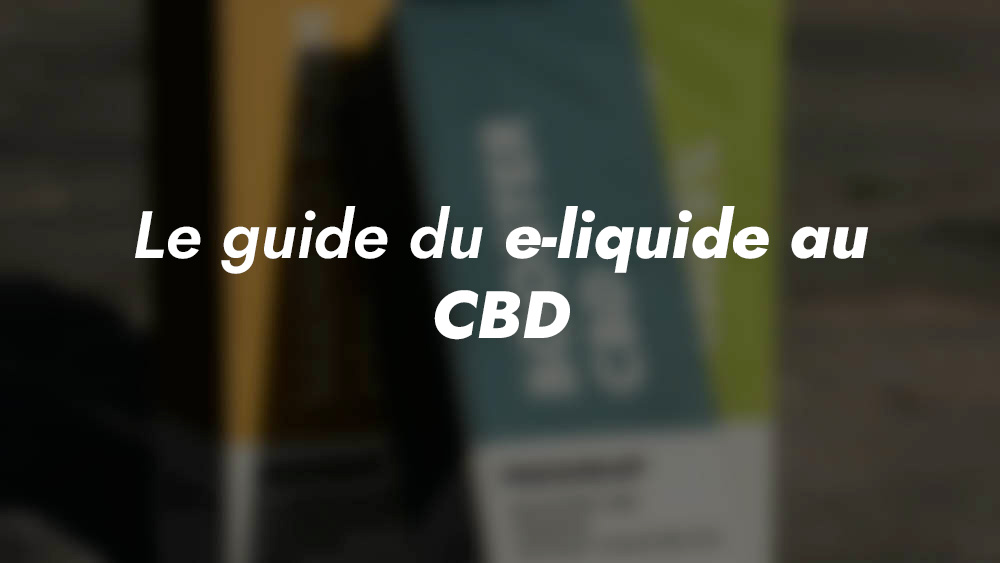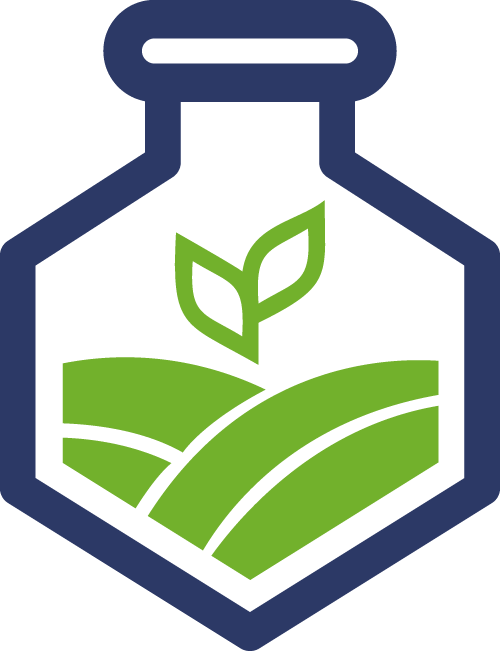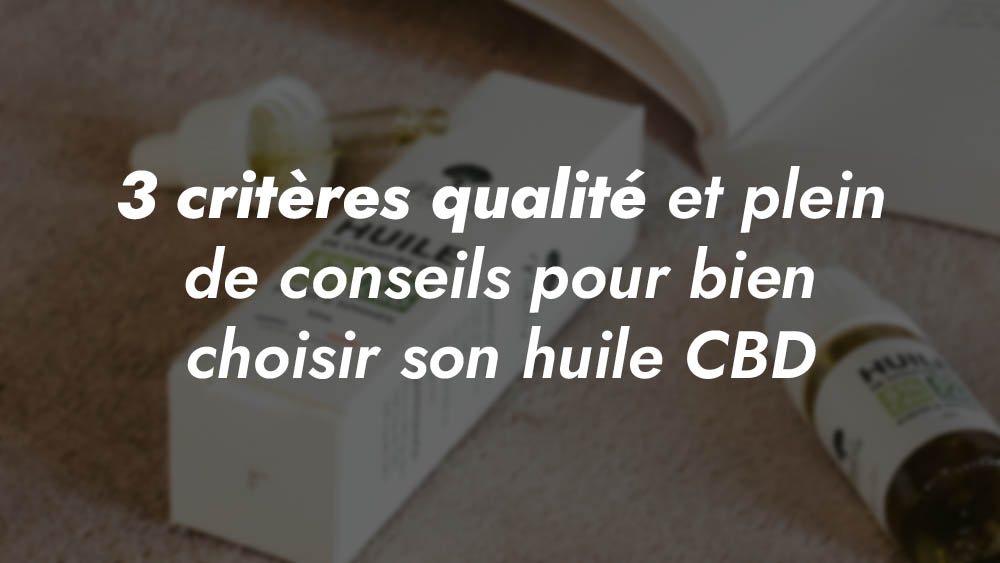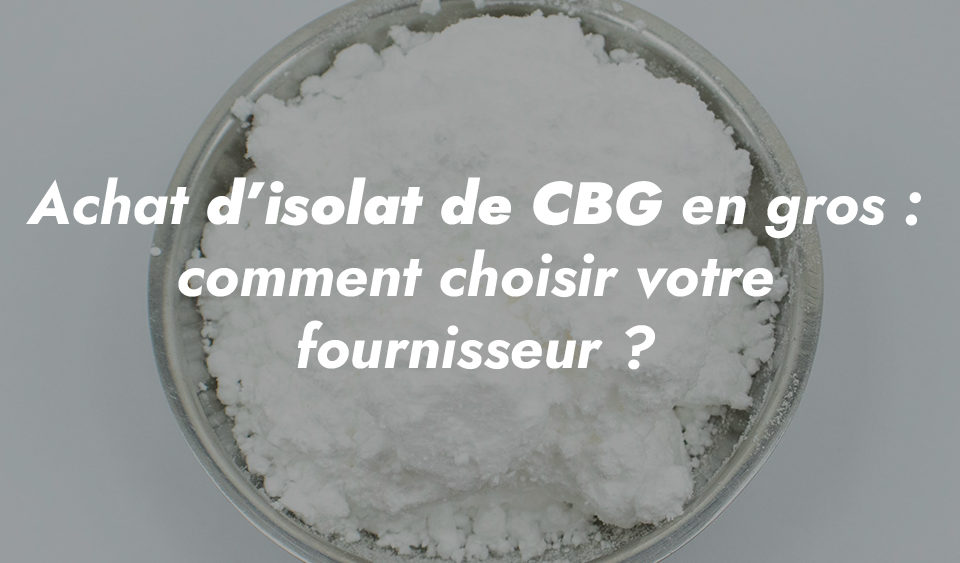
The endocannabinoid system explained
March 24, 2021
CBD e-liquid guide
May 17, 2021Lately, CBD has been on a roll: its free circulation within the EU was reaffirmed last December, and studies conducted on its many therapeutic virtues are increasingly being relayed by industry players.
As a result, the supply and demand for CBD oil is booming, and brands are flourishing both online and in stores.
But in the midst of all these pretty, well-marketed bottles, it's not always easy to find your way around. So today we're going to tell you how to choose a CBD oil that's right for you. And above all: how to recognize a quality product.
How to recognize a quality CBD oil?
As we're wont to say, a buoyant market is unfortunately often synonymous with profiteers. And the CBD market is no exception.
Among the quality products are oils containing chemical residues, or whose extracted CBD is of poor quality. So don't be seduced by enticing packaging or a tempting price, and find out for yourself!

Cannabis sativa
As with any product, the quality of CBD oil depends largely on the quality of its raw material. In other words, hemp.
We'd like to encourage you to choose oils obtained from plants grown in France. Unfortunately, CBD extraction is (for the time being) prohibited in France.
In fact, it is legal to grow hemp (THC-free varieties for industrial use). But it's forbidden to extract CBD from cannabis flowers. Only CBD extracted from seeds, stems and leaves is permitted... Which is rather unfortunate, as it's in the flowers that we find an interesting concentration of CBD....
So no CBD oil 100% made in France. But there's nothing to stop you preferring crops from neighboring countries like Switzerland, home to beautiful green hemp fields. And that way, you can limit your carbon footprint!
And while we're on the subject of ecology, hemp is the ultimate green plant. Although it's quite sensitive and delicate, it doesn't need much water and doesn't require any particular chemical treatment. Conscientious growers have no trouble obtaining the famous organic labels , which we recommend you look for on the bottle.
As for the method of cultivation, indoor or not indoor, here's a good question! Growing indoors means greater control over the plant's environment, as it grows in remarkable conditions. But, ecologically speaking, it's not the greenest option... It's up to you to judge for yourself!

The extraction method
If you consume quality edible oils, then you already have the reflex to check the extraction method before buying. The same applies to CBD oil.
There are three methods for extracting CBD. But only one really produces pure CBD, with intact properties and no chemical residues: CO2 extraction.
This method uses no chemicals. It does, however, require sophisticated (and expensive) equipment to precisely control the temperature and pressure to which the flowers are subjected. The aim of the manipulation is to bring about what is known as "decarboxylation".
Decarboxylation: separating CO2 molecules from CBGa so that it can be converted into CBDa and then CBD. To achieve this, the CO2 must reach a "supercritical" state, on the borderline between a gaseous and a liquid state.
Yes, this method is complex. It requires a great deal of knowledge and experience. Nevertheless, it's the only process that produces quality CBD. We'll come back to this in a moment, but it's also the only CBD extraction technique that produces the much-appreciated full spectrum oils.
As for the other two methods of extracting CBD, we don't recommend them at all. But to satisfy your curiosity: the flowers are simply immersed in either edible oil or chemical solvents. If it's oil, then the extract is low in cannabinoids. And if the solvent is used, harmful residues remain.

Laboratory accreditations
The sale of CBD is legal, but contrary to what you might think, it's still largely unregulated. In reality, there is only one golden rule that the producer, seller and consumer must respect. CBD products must contain less than 0.2% THC. The reason for this regulation is obvious: THC is considered a narcotic and is therefore illegal.
But, as a consumer, wouldn't you want to know a little more before applying this oil to your skin or ingesting it?
Now that you know that CBD is sometimes extracted with chemical solvents, it may be worth checking that the product you are about to buy does not contain any toxic residues... Unfortunately, on this point, the regulations are much less rigid and a bit sinful!
Producers must therefore, on their own initiative, request a certificate of analysis from an independent laboratory. Once again, only the most conscientious in the industry will be able to provide you with a complete analysis of their product...
Which CBD oil is right for me?
CBD concentration in oil
If you've ever taken a look at the CBD oils on the market, then you may have found yourself a little perplexed by the choice of the amount of CBD contained in the oil. There are all kinds of concentrations: from 2% to 30%!
While it's logical to understand that the higher the CBD concentration, the more noticeable the effects, the question remains: why such a discrepancy? Do oils with a 2% CBD concentration really have very little effect, while those with a 30% concentration are very, very strong?
Well, not exactly. In fact, it's important to bear in mind that not everyone reacts in the same way to cannabinoids and CBD in particular. Some will feel an extremely relaxing effect with a 5% oil, while others will need to consume oils with more than 15% to achieve the same effect. The amount of CBD also depends on the number of drops you consume. You need to take into account the capacity of the bottle.
10 ml is equivalent to about 200 drops.
And so, in 1 drop of 2% CBD oil you'll have 1 mg of CBD.
Similarly, 1 drop of 30% CBD oil contains 15 mg of CBD.
So how do I choose the right concentration of CBD for my oil?
If you're new to CBD, then we recommend starting with a low concentration, i.e. no more than 10%. Observe the effects according to the number of drops taken, and adjust accordingly.
Full spectrum or isolate?
Before choosing the concentration of CBD in your oil, you must first decide between two main types of product: full spectrum CBD oil and isolated CBD oil.
Full-spectrum CBD oil is, as the name suggests, an oil that contains all the components of a cannabis variety. In this case, the oil will contain traces of THC, the concentration of which may not exceed 0.2% under current legislation. Thanks to the entourage effect, these oils let you enjoy all the benefits of hemp.
The entourage effect is a scientific principle whereby a molecule is more effective in the presence of other molecules than in its isolated form. In the case of medical cannabis, scientists agree that CBD is all the more effective in the presence of all the cannabinoids and terpenes contained in hemp.
Isolated CBD oil, on the other hand, contains only the CBD molecule. Cannabidiol is, according to scientific studies, the main cannabinoid responsible for the supposedly therapeutic effects, so its consumption remains perfectly relevant. All the more so if you're reluctant to ingest THC, even in very low concentrations.
Dosage form: oil or capsule?
The last question to answer before choosing your CBD oil is the galenic form. As you may know, the precious oil is available in a bottle with dropper or in capsule form.
Both solutions have their advantages:
🍃 CBD oil 🍃
gives you great freedom of use. You can place a few drops under the tongue for oral use. But you can also apply it to the skin: directly, mixed with a massage oil or your moisturizer or any beauty product in general. And if you like, you can also add a few drops of CBD oil to your culinary preparations.
💊 CBD oil-based capsules 💊
are not as versatile, but they do have the advantage of being extremely discreet. You can take them with you wherever you go, and take a capsule when you want without arousing any curiosity. However, it's worth noting that CBD capsules are a little less developed than oils, so the choice in terms of CBD concentrations isn't as vast.
Buying CBD oil: where and at what price?
The right price
You now have everything you need to choose your CBD oil. There are still a few technical details to be addressed, notably price.
In practical terms, there's a CBD oil to suit every budget. You can buy a bottle of CBD oil for around twenty euros, or even less. Just as you'll find oils costing over 120 euros.
As always, price tends to be proportional to product quality.
As far as CBD oil is concerned, it should be noted that its manufacture, when meticulously carried out, represents a significant cost for the producer. On this subject, we've had occasion to talk about the CO2 extraction method for CBD, which produces a very high quality oil, but is very expensive to set up.
But beware: the price of CBD oil also depends on the size of the bottle and the concentration of CBD it contains! Think in terms of number of drops, and bear in mind that 2 bottles of 10 ml will cost you more than one bottle of 20 ml.
A 10 ml bottle of CBD oil with a 5% concentration costs between 25 and 50 euros. At the same concentration, a 30 ml bottle costs between 50 and 70 euros.
Where to buy CBD oil
You can buy CBD oil onthe Internet, or in a store with a street address. Once again, we remind you that the sale of CBD oil is totally legal, provided it contains no more than 0.2% THC in the case of a full spectrum.
The advantage of online stores is that you'll often have a huge choice. But if you go to the store, you can talk to the sales assistant, who will be able to advise you and tell you where the oil comes from. Plus, you'll save on shipping costs!
The CBD Guide is a platform for CBD stores in France and Europe. The site functions as a veritable CBD directory. Shops are listed by city and type of product. A short description is even available, so you know what to expect. In short, we highly recommend it!





